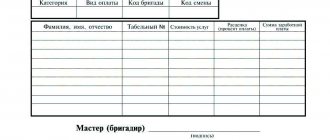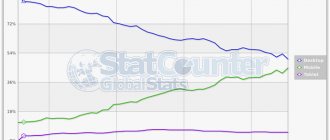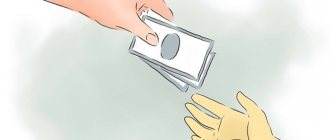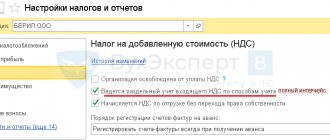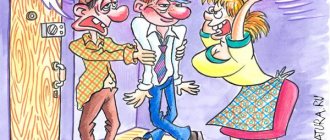In the document flow system of business entities and regulatory authorities, it is customary to use a number of letter and numeric combinations (codes) to reflect information about an enterprise or entrepreneur, products produced in a specific period, etc. This is necessary to speed up the procedure for recognizing incoming reports by software and systematizing information into categories depending on the codes it contains. This approach is actively used by tax authorities and Rosstat.
Household services 010000 (2)
- 011000
— Repair, painting and sewing of shoes (CC — 5) - 012000
— Repair and sewing of clothing, fur and leather products, hats and textile haberdashery products, repair, sewing and knitting of knitwear (КЧ -
- 013000
— Repair and maintenance of household radio-electronic equipment, household machines and household appliances, repair and manufacture of metal products (CC - 0) - 014000
— Manufacturing and repair of furniture (CC — 3) - 015000
— Dry cleaning and dyeing, laundry services (CC — 6) - 016000
— Repair and construction of housing and other buildings (CC — 9) - 017000
— Maintenance and repair of vehicles, machinery and equipment (CC — 1) - 018000
— Services of photographic studios and photo and film laboratories, transport and forwarding services (CC — 4) - 019000
— Services of baths, showers and saunas, hairdressing and beauty services provided by public utility organizations. Rental services. Ritual, ceremonial services (CC - 7)
OKUN codes
The OKUN classifier (OK 002-93) lost force on January 1, 2017, according to the order of Rosstandart dated January 31, 2014 No. 14-st, it was replaced by the OKPD classifier (OK 034-2014 (KPES 2008)).
OKUN is the abbreviated name of the All-Russian Classifier of Services to the Population , part of the Unified System of Coding and Classification of Technical, Economic and Social Information.
OKUN is designed to solve problems such as:
- Studying the supply and demand of any services;
- Comparison of the derived domestic classification with international standards and norms;
- Assistance in the possibility of providing the population with various services by enterprises of various forms of ownership, including individual entrepreneurs;
- Identification of current services that are required by the population in a changing market;
- Improving the efficiency of using computer technology;
- Ensuring consumer safety in terms of health and life, protecting the environment, preventing damage to property and other harm through certification of services ;
- Accounting and forecasting the volume of services required by the population;
- Improvement and development of standardization in this area.
OKUN was designed to replace 2 outdated Soviet rubricators.
How objects are classified in OKUN
Maintaining the classifier is the responsibility of the VNIIKI of the State Standard of the Russian Federation, which interacts closely with other ministries and departments of Russia, enterprises and organizations of various forms of ownership that provide all kinds of services to the population.
The objects of the all-Russian classifier of services to the population are services provided by legal entities and individual entrepreneurs to the population. It is worth noting that neither the methods of serving the population nor the organizational and legal form matter, as long as they are legal.
What sections of OKUN codes exist?
For OKUN, a hierarchical classification has been adopted; the entire classification set of objects is divided into groups. Next, each group is divided into subgroups, which in turn are divided according to their functional purpose into types of activities. The classifier uses a sequential coding system.
OKUN includes such groups as:
- domestic services;
- passenger transport services;
- communication services;
- housing and communal services;
- services of cultural institutions;
- excursion and tourist services;
- sports and physical education services;
- health resort services;
- medical services;
- veterinary services;
- legal services;
- services in the education system;
- banking services;
- market services;
- catering and trade services;
- other services to the population.
Services in the education system 110000 (3)
- 111000
— SERVICES IN THE PRE-SCHOOL EDUCATION SYSTEM (CC — 6) - 112000
— SERVICES IN THE SECONDARY EDUCATION SYSTEM (CC — 9) - 113000
— SERVICES IN THE HIGHER EDUCATION SYSTEM (CC — 1) - 114000
— SERVICES IN THE SYSTEM OF TECHNICAL TRAINING OF PERSONNEL (CC — 4) - 114100
— Professional rehabilitation of the population (CP —
- 115000
— TRAINING OF THE POPULATION ON COURSES (CC — 7) - 115100
— Training in foreign language courses (CC — 0) - 115200
— Training in car driving courses (CC — 4) - 115300
— Training in other courses and clubs (CC —
- 116000
— OTHER SERVICES IN THE EDUCATION SYSTEM (CC — 4)
OKUN - what is it?
All types of codes used in official documents are approved by law at the federal level. Codes and their interpretations are given in specialized classifiers. One of them, until 2021, was OKUN - a classifier that provides systematized data on the services provided by business entities that are aimed at meeting the needs of the population.
This type of classifier was put into effect by Gosstandart by Decree No. 163 dated June 28, 1993. The objects of classification according to OKUN are types of services to the population that can be provided by different business entities using any service methods. The classifier was supposed to become a tool for solving the following set of problems:
- formation of a systematic database for statistical monitoring of indicators of demand and supply for different types of services to the population;
- creation of regulatory mechanisms for comprehensive assistance to business entities in the provision of services to individuals;
- the ability to compare types of OKUN with unified international classification systems for services;
- separation of current services from those that are no longer in demand due to dynamic changes in the market;
- increasing the level of efficiency of computer data processing;
- forecasting the volume of demand for services in future periods;
- development of a standardization system in the field of meeting the needs of citizens.
Other services to the population 800000 (8)
- 801000
— Financial intermediation services (CC — 0) - 802000
— Insurance services (CC — 3) - 803000
— Services related to real estate transactions (CN — 6) - 804000
— Computer services and related maintenance (CC — 9) - 805000
— Services in the field of billing, accounting and auditing, advice on taxation and production management (CC — 1) - 806000
— Services in the field of advertising (CC — 4) - 807000
— Services in the scientific field, services provided by microphotocopying and document restoration laboratories (CC — 7) - 808000
— Security alarm installation services. home security services (CC - 9)
OKUN
All-Russian Classifier of Services to the Population (OKUN) OK 002-93 - approved by Resolution of the State Standard of Russia dated June 28, 1993 N 163, as amended on October 17, 2013. and will be valid until the end of 2021, when the transition period of joint application of the old OKUN and the new OKVED2 and OKPD2 classifiers ends.
It will be useful for accountants and lawyers mainly for determining household services that fall under UTII.
Share useful information with your friends:
To independently view the codes of the classifier of services to the population, you can use the author's program for viewing and searching OKUN codes, as usual, in full free access and without restrictions: The application does not require installation, just unpack the archive and use it!
To get a consultation
Contact Information
We are in social networks:
Our addresses:
- Moscow
- Moscow
- Lyubertsy
Address in Moscow:
- Pokhodny proezd, 4, office 1 (metro Tushinskaya, metro Skhodnenskaya)
- 8
- The office is open from 10 a.m. to 6 p.m.
Address in Moscow:
- Pokhodny proezd, 4, office 1 (metro Tushinskaya, metro Skhodnenskaya)
- 8
- The office is open from 10 a.m. to 6 p.m.
Address in Moscow:
- Volgogradsky Prospekt, 2, office 502 (metro station Proletarskaya, 100 meters)
- 8
- The office is open from 10 a.m. to 6 p.m.
Address in Lyubertsy:
- st. Kotelnicheskaya, 8A, office 16 (opposite the tax office)
- 8 accountant
- 8 lawyer
- 8 stamps
- The office is open from 09:00 to 17:00
Address in Lyubertsy:
- Oktyabrsky Prospekt, 403, office 113 (seal and stamp workshop)
- 8
- 8 ext. 113
- The office is open from 09:30 to 18 hours
News
09/04/2019 The director has the right to issue an order for his dismissal at his own request
09/02/2019 The procedure for obtaining installment plans for paying taxes has been simplified
08/30/2019 The tax office has the right to recover funds from the personal accounts of entrepreneurs
08/28/2019 Federal Tax Service on the provision of electronic sick leave
All news
We are in Contact
Our videos
Legal Center Fiolent
All services for entrepreneurs in one place!
- Requisites
- Payment Methods
- Delivery
- Return Policy
- Privacy Policy
Services
- Legal services
- Accounting services
Services
- Individual entrepreneur registration
- Liquidation of individual entrepreneurs
- LLC registration
- Liquidation of LLC
Contacts
- 8
- [email protected]
- Our offices
© All rights reserved
Fiolent LLC uses cookies to personalize services and improve the usability of the website. Cookies are small files containing information about previous visits to a website. If you do not want to use cookies, please change your browser settings.
Thank you for your application, our manager will contact you.
OKVED codes 2021 (OKVED 2)
OKVED-2 codes (2021) are codes of the All-Russian Classifier of Types of Economic Activities, intended for classifying types of economic activities. OKVED 2 codes indicate the types of activities of companies in applications for registration of LLCs, individual entrepreneurs and other legal forms, when the type of activity of the company changes (adding or deleting OKVED codes), when the main selected OKVED code changes, and these codes are also prescribed in the charters of LLC, PJSC, JSC when registering companies or making changes.
All-Russian classifiers of services to the population
In Russian reality, it has developed its own idea of the service sector, which has been realized in the theoretical aspect of service and in the practice of its real existence.
To clearly distinguish non-production sectors in reporting and other documents, in 1976 in Russia (USSR) the all-Union classifier “Branches of the National Economy” (OKONKh) was introduced, which in 1992 was modified in relation to the conditions of the Russian market economy.
OKONH represents groupings of activities by industry in accordance with their functions in the general system of division of labor (the main division into the sphere of material production and non-production sphere).
The sphere of material production includes all types of activities that create material goods in the form of products, energy and other functions that are a continuation of production in the sphere of circulation (storage, transportation, etc.). Non-productive activities include: housing and communal services, healthcare, social security, public education, science and scientific services, culture and art, finance and credit, etc.
In 1993, the “All-Russian Classifier of Types of Economic Activities, Products and Services” OK 004-93 (OKDP) was approved, which is part of the Unified System of Classification and Coding of Technical, Economic and Social Information of the Russian Federation (ESKK). This classifier, unlike OKONH, more fully covers the activities of the service sector and is built on the basis of the International Standard Industrial Classification (MCOK/ISIC) and the International Classification of Basic Products (ICOP/CPC).
In a single code space, OKDP combined three classification objects: 1) types of economic activity; 2) types of products; 3) types of services. The code adopted in OKDP allows for international comparisons.
The structure of the OKDP code when classifying types of economic activity provides for the identification of the following hierarchies: section of economic activity (coded in capital letters of the Latin alphabet from A to Q); subsections, groups, subgroups and groupings, which are coded by numbers. For example, O 9249 - activities for organizing recreation and entertainment. OKDP codes are used in statistical reporting.
In contrast to international practice, Russia also has the “All-Russian Classifier of Services to the Population” OK 002-93 (OKUN), introduced on January 1, 1994.
The All-Russian Classifier of Services to the Population is a structural element of the unified system of classification and coding of technical, economic and social information (ESKK TEI).
In the preamble of OKUN it is noted that the classifier was developed to solve the following problems: development and improvement of standardization in the field of services to the public; carrying out certification of services in order to ensure life safety, health of consumers and environmental protection, preventing damage to consumers’ property; increasing the efficiency of computer technology; accounting and forecasting of objects of sale of services to the population; studying population demand for services; provision of services to the population by enterprises and organizations of various organizational and legal forms of ownership and citizens; harmonization of the classification of services to the population with international classifications; updating types of services taking into account new socio-economic conditions in the Russian Federation.
The classifier includes the following groups of services:
01 - household services;
02 - transport services;
03 — communication services;
04 — housing and communal services;
05 — services of cultural institutions;
06 - tourist services and services of accommodation facilities for temporary residence of tourists;
07 — physical education and sports services;
08 - medical services, health resort services, veterinary services;
09 — legal services;
10 - banking services;
11 — services in the education system;
12 - trade and catering services, market services;
80 - other services to the population.
However, note that we are dealing with today's classifier. The authors, undoubtedly, predicted such a turn of events and, judging by the encoding, reserved the collective right to expand the classifier as the country formed a full-fledged service by modern standards.
On January 1, 2003, the All-Russian Classifier of Types of Economic Activities OK 029-2001 (OKVED) came into force in Russia. The introduction of this classifier made it possible to cancel OKONKH and parts 1, IV OKDP. This classifier has a number of objective advantages in terms of the adequacy of groupings and structuring of activities compared to the outdated OKONH.
The structure of the code contains a Latin letter (indicates a section), for example, H - “Hotels and Restaurants”, I - “Transport and Communications”, and numbers. For example, I 63.30.1 - “Transport and communications”, subsection 63 - “Auxiliary and additional transport activities”; 30.1 — “Organization of comprehensive tourist services”; 30.3 — “Providing tourist information services.” In general, OKVED corresponds with OKDP, is used to identify industry affiliation, and is also used in statistical reporting.
Issues for discussion
1. What is included in the concept of “service sector”?
2. Define the concepts “.
3. Explain the concepts of “service” and “service”.
4. List the functions of the service sector.
5. Determine the role of the service sector in the social division of labor.
6. Classification of the service sector in accordance with the functional focus.
7. Classification of service processes from a process (operational) point of view.
8. All-Russian classifiers of services to the population. Industry classification of services.
9. What is the structure of the code designation of a classification object according to the All-Russian Classifier of Services to the Population OK 002-93 (OKUN)?

